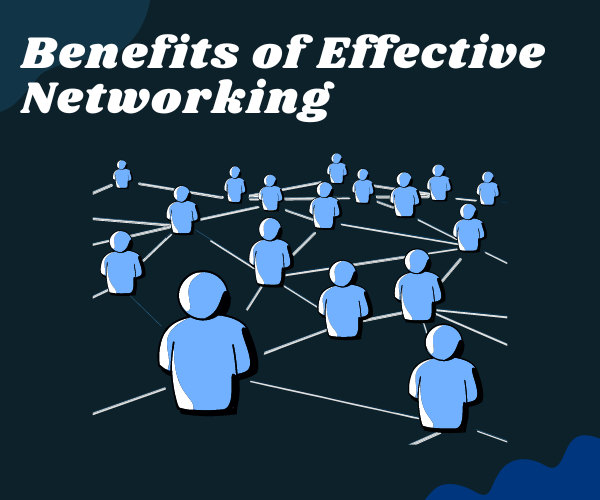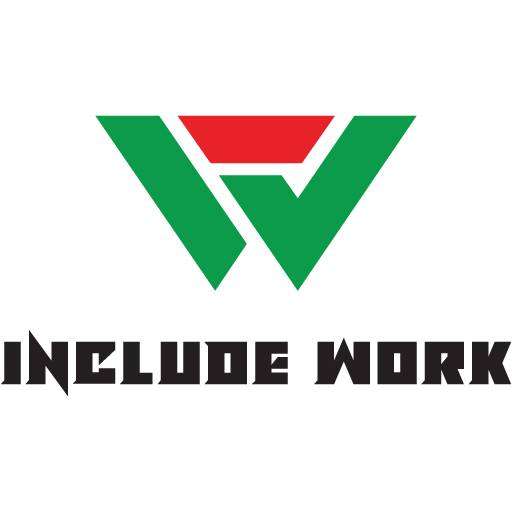Networking is more than just exchanging business cards or connecting on social media; it’s an invaluable aspect of building a successful career and thriving professional relationships. At its core, networking involves creating and nurturing relationships with others in your field or related fields to exchange information, support, and opportunities.
Table of Contents
Whether you’re a seasoned professional or just starting out, understanding the essence and power of effective networking can significantly enhance your career prospects and open doors to new possibilities. Let’s dive into what makes networking so crucial in today’s competitive environment.
Types of Networking
Networking can be categorized into several types, each serving distinct purposes and offering unique advantages. Here’s a closer look at the common forms of networking:

Social Networking: This involves connecting with people via social media platforms like LinkedIn, Facebook, and Twitter. It’s great for reaching out to new contacts and maintaining relationships with minimal geographical constraints.
Professional Networking: Typically involves more formal settings like industry conferences, seminars, and business events where professionals gather to share knowledge, find job opportunities, and discuss industry trends.
Community Networking: Engaging with local community groups or associations can be a powerful way to build relationships with potential local clients or collaborators and to give back to the community.
Casual Networking: Often underrated, casual networking can occur in informal settings like parties, dinners, or sports events. These environments can sometimes lead to the most genuine connections as they are based on common personal interests.
Online Networking: Especially significant in today’s digital age, online forums, and virtual conferences allow professionals to connect across the globe, sharing ideas and resources without the need for physical presence.
Understanding these types can help you strategize your networking efforts based on your career objectives and personal style.
Benefits of Effective Networking
Effective networking isn’t just about expanding your contact list; it offers profound benefits that can catalyze both personal and professional growth:
Career Opportunities: Regular Collaborating can open doors to new job opportunities, partnerships, or even ideas for starting your own business. It often provides first-hand information about newly opening positions and requirements not listed elsewhere.
Professional Development: Through interactions with varied professionals, you can gain insights, advice, and strategies that enhance your own skills and knowledge. It can also provide a platform for exchanging innovative ideas and staying updated with industry trends.
Increased Visibility: Being active in networking circles increases your visibility and presence in your field. This can lead to more recognition and respect among peers, which is crucial for career advancement.
Access to Resources: Networking can connect you to necessary resources that may not be readily available otherwise. Whether it’s a recommendation for a service provider or access to exclusive information, the connections you make can provide significant advantages.
Support System: A robust network can serve as a support system, offering guidance during career transitions, challenging projects, or even personal hardships. The encouragement from a network can be a crucial factor in overcoming obstacles.

In essence, Collaborating creates a symbiotic environment where individuals can grow and succeed by supporting each other. Engaging effectively in Collaborating not only propels your career forward but also enriches your professional journey with meaningful relationships and experiences.
Key Strategies for Successful Networking
To leverage the full potential of networking, it’s essential to approach it with the right strategies. Here are key tactics that can make your networking efforts more successful:
Be Genuine: Authenticity forms the cornerstone of meaningful connections. Engage with others sincerely and without an overt agenda. Genuine interest in the welfare and success of your contacts will lead to stronger, more enduring relationships.
Set Clear Goals: Know what you want to achieve from your networking activities. Whether it’s finding a mentor, learning about new industry trends, or securing job leads, having clear goals can help you navigate your Collaborating path more effectively.
Prepare a Pitch: Have a concise and clear personal pitch ready. This should succinctly describe who you are, what you do, and what value you bring to your professional relationships. A compelling pitch makes you memorable.

Follow Up: After making new contacts, follow up with a brief message referencing your conversation. This can help convert a brief interaction into a lasting relationship. Regular follow-ups keep the connection alive and show your continued interest.
Offer Value: Networking is a two-way street. Always think about how you can add value to your connections, whether it’s sharing a helpful article, providing a referral, or offering your expertise. This approach builds trust and mutual respect.
Utilize Technology: Make use of professional Collaborating platforms like LinkedIn to maintain and expand your network. Regular updates, posts, and participation in discussions can keep you visible and engaged with your network.
By implementing these strategies, you can build a network that not only supports your current professional needs but also evolves with your career, providing benefits and opportunities over the long term.
Common Networking Mistakes to Avoid
While networking offers numerous benefits, certain missteps can hinder your ability to effectively connect with others. Here are some common networking mistakes to avoid:

Overlooking Follow-Up: Neglecting to follow up after meetings and interactions is one of the most common errors. Without follow-up, even the most promising connections can fade away.
Being Too Self-Centered: A conversation where one party only talks about themselves can be off-putting. Networking is about mutual engagement. Ask questions, listen actively, and show genuine interest in the other person.
Lacking Preparation: Entering a Collaborating event without a plan can lead to missed opportunities. Know who will be attending, what you wish to learn, and whom you aim to meet. Preparation shows professionalism and respect for others’ time.
Ignoring Personal Branding: Your online presence and personal brand should be consistent and professional. An outdated LinkedIn profile or unprofessional social media posts can create a negative impression.
Failing to Provide Value: Networking is reciprocal. If you’re only taking and not giving back, your connections may see little benefit in maintaining the relationship. Always consider how you can help others.
By steering clear of these pitfalls, you can ensure that your networking efforts are constructive and well-received, laying the foundation for strong, beneficial professional relationships.
Leveraging Technology in Networking
In today’s digital age, technology plays a pivotal role in enhancing and facilitating networking efforts. Here’s how you can leverage technology to expand and nurture your professional network:

Professional Networking Platforms: Utilize platforms like LinkedIn to create and maintain professional connections. Regular updates, sharing relevant content, and engaging with others’ posts can keep you visible and connected.
Networking Apps: Apps like Shapr and Bumble Bizz can introduce you to professionals in your area who share your interests or goals, making it easier to find relevant connections.
Virtual Events: Attend webinars, online conferences, and virtual meetups. These events often offer chat functions or breakout rooms where you can interact with other attendees.
Social Media: Beyond LinkedIn, platforms like Twitter and Facebook can be used to follow industry leaders, join groups, and participate in discussions that are relevant to your field.
CRM Tools: Customer Relationship Management (CRM) tools can help you keep track of your contacts, notes from meetings, follow-ups, and important dates, which is crucial for effective networking.
By integrating these technologies into your networking strategy, you can maintain a robust network that supports your professional growth and development, regardless of physical boundaries.
Networking During a Pandemic
The global pandemic has reshaped the landscape of networking, pushing professionals to adapt and innovate in their Collaborating strategies. Here are some effective ways to continue networking during challenging times:
Virtual Networking Events: Many organizations and professional groups have transitioned to online events. These can range from large-scale webinars to more intimate virtual networking hours. Participating actively in these events can help you stay connected.
Social Media Engagement: With more professionals increasing their online presence, now is a great time to engage more on social media. Comment on posts, share interesting articles, and start conversations to build relationships.
Online Courses and Workshops: Joining online courses or workshops not only enhances your skills but also provides a platform to connect with fellow learners and facilitators who share your interests.
Virtual Coffee Meetings: Invite professional contacts for a virtual coffee. These one-on-one meetings can be a great way to catch up, discuss industry trends, or offer mutual support during uncertain times.
Leverage LinkedIn: LinkedIn has become even more crucial during the pandemic. Regularly updating your profile, publishing posts, and participating in group discussions can increase your visibility and attract new connections.

Embracing these digital networking strategies can help maintain and grow your professional network, ensuring you remain connected and relevant, even when face-to-face interactions are limited.
How Do I Start Networking?
Starting to network can seem daunting, but with the right approach, it can become a rewarding part of your professional growth. Here are steps to kickstart your Collaborating journey:

Define Your Objectives: Understand what you hope to achieve through Collaborating. Whether it’s finding a mentor, learning new industry skills, or seeking job opportunities, having clear goals can guide your networking activities.
Research Events and Platforms: Identify networking events, both virtual and in-person, that align with your interests and professional goals. Also, explore which online platforms are most used by professionals in your field.
Prepare Your Introduction: Craft a short and impactful introduction or ‘elevator pitch’ that succinctly describes who you are, what you do, and what you’re looking for. Practice it to ensure confidence and clarity.
Engage Actively: Whether online or in person, be proactive in your interactions. Ask insightful questions, contribute to discussions, and show genuine interest in others’ work and challenges.
Follow Up: After making new contacts, follow up with a personalized message. Refer back to your conversation to strengthen the connection and express your interest in keeping in touch.
Be Consistent: Networking is a continuous process. Regularly attend events, participate in discussions, and update your social media profiles to keep building and nurturing your network.
By following these steps, you can effectively initiate and grow your professional network, opening up numerous opportunities for personal and career development.
Networking | My Personal Experience
I totally get why you’re diving into the networking scene—it’s a game changer, trust me! A few years back, I was at one of those large industry conferences, you know, the kind where you feel like a tiny fish in a vast ocean. I was mainly there to listen to some key speakers, not really expecting anything life-changing.
But, as fate would have it, I ended up bumping into a person who not only became a great mentor but also a fantastic friend. We were both trying to grab the same atrocious bagel (conference food, am I right?) and just started chatting. It was one of those random, unplanned conversations that surprisingly shifted the trajectory of my career. We talked about everything from tech trends to our favorite sci-fi movies. It was refreshing to connect on a personal level first, rather than a purely professional one.
Fast forward to today, and that single interaction has opened so many doors for me. It’s not just about exchanging business cards and moving on; it’s about building genuine connections.
Take it from someone who’s been there: the real magic of Collaborating happens in those unscripted moments. Whether you’re an introvert or an extrovert, my advice would be to approach networking events as opportunities to learn and grow, not just to pitch yourself. Share your passions, ask sincere questions, and, most importantly, listen. You’ll be surprised at how much you can gain from simply being genuine and curious. Trust me, the right connections often come from the most unexpected conversations!
Conclusion
In conclusion, networking is an indispensable skill in today’s professional world. It goes beyond mere interactions; it’s about building meaningful relationships that foster both personal and professional growth. By understanding the various types of networking, embracing the power of technology, and avoiding common pitfalls, you can enhance your ability to connect with others effectively.
Whether you’re just starting out or looking to deepen existing relationships, the right Collaborating strategies can open doors to numerous opportunities and provide a supportive community to navigate your career path. Remember, the value of networking lies not just in the quantity of your connections, but in the quality and depth of those relationships.






